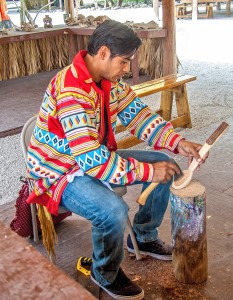 Did you know a Native American tribe resides still in the Everglades? There is, and they are called the Miccosukee Tribe of Indians of Florida. They occupy several reservations in Florida, known as the Miccosukee Indian Reservation The largest section of this reservation is 333 acres of the north border of the Everglades National Park; in fact, the tribe controls around 200,000 acres of wetland; this land must be used for “the purpose of hunting, fishing, frogging, and subsistence agriculture to carry on the traditional Miccosukee way of life.”
Did you know a Native American tribe resides still in the Everglades? There is, and they are called the Miccosukee Tribe of Indians of Florida. They occupy several reservations in Florida, known as the Miccosukee Indian Reservation The largest section of this reservation is 333 acres of the north border of the Everglades National Park; in fact, the tribe controls around 200,000 acres of wetland; this land must be used for “the purpose of hunting, fishing, frogging, and subsistence agriculture to carry on the traditional Miccosukee way of life.”
The Miccosukee were originally part of the Creek Nation, who were an association of clan villages in Alabama and Georgia. The Miccosukee come from the Lower Creek region of Creek Nation and speak Mikasuki; they lived with other Lower Creek tribes in harmony as they shared religious and social practices. To survive, they hunted, fished and grew crops, including corn. The Tribe celebrates this new harvest each year still at the Green Corn Dance.
Around 1715, the Miccosukee made their way down into Florida in an effort to escape European settlers, as well as the Upper Creek Nation (who they did not get along with). The remained in the panhandle area for a while, but then ventured to settle around Alachua, which is south of the Tampa Bay area.
After Spain sold Florida to the United States, treaties between Indian leader and the new American settlers were occurring but in 1830 the Indian Removal Act was put into place and the Second Seminole War and Third Seminole War took place. During these wars, the Miccosukees escaped the fighting and hid in the Everglades. The current tribal members are descendants from the 50 members who were not captured in the wars.
In the Everglades, the Miccosukees had to adapt the new environment so they created “hammock style” camps. They fished and hunted to eat. They began to harvest native fruits of the hammocks, but corn, which played an important role in their customs, became difficult to grow.
Over the years, the Miccosukees have adapted to new ways but have always retained their culture. They have kept their language, medicine, and clans. Many still do not live in modern housing and prefer to live in chickees, which are thatched-roof houses on stilts. Since the 9160s, the Miccosukees have their own Constitution and bylaws.
The Miccosukee Indian Village and Airboat Rides is a family camp where there are sleeping, working, and cooking chickees. This village includes a museum, board walk, and alligator arena. People can visit the camp and watch the Miccosukke Indians engage in doll making, beadwork, patchwork, and basket weaving. There are alligator demonstrations, airboat rides, a restaurant, and a gift shop.
This village is a great place and trip to learn all about the culture, lifestyle, and history of the Tribe. The Village is open daily from 9 a.m. to 5 p.m. Entry costs $10 for adults, children (5-12)$6, and children under 5 are free. Airboat rides around the Village cost $16.
Explore the Everglades
The current population of the Miccosukee service area is 550 members. Membership is open to Indians who are on-held Miccosukee Indian blood and are not enrolled in other tribes. Definitely check out this culturally-rich area and learn more about their history in Florida and the everglades at their Village on Tamiami Trail in Miami.
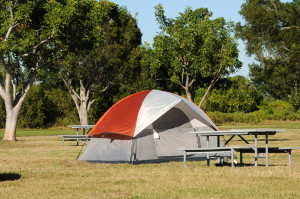 Camping is one of the best ways to experience the great outdoors. But, did you know you can actually go camping in the Everglades National Park? You can! The park offers camping opportunities in both the front country and back country. Visitors are able to go camping year-round, but the wet season (June through November) is a more difficult and uncomfortable environment for camping. If you’re thinking about experiencing this beautiful wetland through a camping experience, remember to come prepared; the park does not provide any camping equipment for people to buy or rent.
Camping is one of the best ways to experience the great outdoors. But, did you know you can actually go camping in the Everglades National Park? You can! The park offers camping opportunities in both the front country and back country. Visitors are able to go camping year-round, but the wet season (June through November) is a more difficult and uncomfortable environment for camping. If you’re thinking about experiencing this beautiful wetland through a camping experience, remember to come prepared; the park does not provide any camping equipment for people to buy or rent.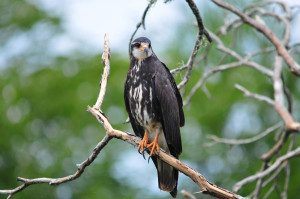 Avid birdwatcher? Well, the Everglades is a great place to go bird watching; you’ll see a variety of birds. The Park provides the perfect setting with plenty of spots where birds roost, nest, eat, or fly by. In fact, the Park is one of the top 10 birding locations in the world; park goers have the chance to see both resident coastal and wading birds in a number of different species. There are more than 350 species of birds in the Everglades for a person to catch a glimpse of! Come prepared with a set of binoculars to spot as many as you can!
Avid birdwatcher? Well, the Everglades is a great place to go bird watching; you’ll see a variety of birds. The Park provides the perfect setting with plenty of spots where birds roost, nest, eat, or fly by. In fact, the Park is one of the top 10 birding locations in the world; park goers have the chance to see both resident coastal and wading birds in a number of different species. There are more than 350 species of birds in the Everglades for a person to catch a glimpse of! Come prepared with a set of binoculars to spot as many as you can!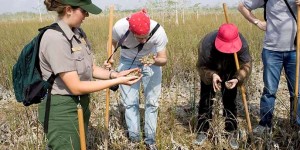 Airboats are an amazing way to zip through the Everglades, and a ride on one of them is certainly something you’ll want to experience at least once in your lifetime; however, there are many ways to explore this national park. If you’re looking for a learning experience while on your exploration of this majestic wetland, then you should book a tour with a ranger.
Airboats are an amazing way to zip through the Everglades, and a ride on one of them is certainly something you’ll want to experience at least once in your lifetime; however, there are many ways to explore this national park. If you’re looking for a learning experience while on your exploration of this majestic wetland, then you should book a tour with a ranger.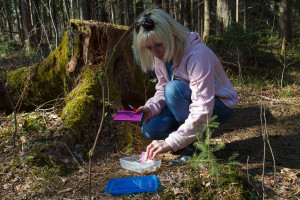 Ever heard of geocaching? Well if you haven’t it’s really fun! It’s a real-world outdoor treasure hunt. What’s even more exciting is that you can do this in the Everglades. In short, geocaching is a game where players have to locate hidden containers (called geocaches) using a GPS-enabled device while sharing their experience online.
Ever heard of geocaching? Well if you haven’t it’s really fun! It’s a real-world outdoor treasure hunt. What’s even more exciting is that you can do this in the Everglades. In short, geocaching is a game where players have to locate hidden containers (called geocaches) using a GPS-enabled device while sharing their experience online.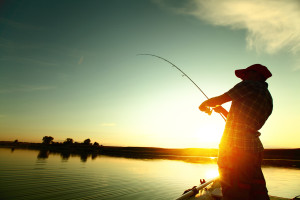 Did you know you can go fishing in the Everglades? You can! Since one-third of the Everglades is water covered, it makes sense that there are plenty of places where fishing would be ideal! In the Park, anglers have the opportunity to catch a variety of fish, including: snapper, redfish, bass, sea trout, and bluegill. Being a national park and in the state of Florida, people must be aware and abide by local fishing information.
Did you know you can go fishing in the Everglades? You can! Since one-third of the Everglades is water covered, it makes sense that there are plenty of places where fishing would be ideal! In the Park, anglers have the opportunity to catch a variety of fish, including: snapper, redfish, bass, sea trout, and bluegill. Being a national park and in the state of Florida, people must be aware and abide by local fishing information.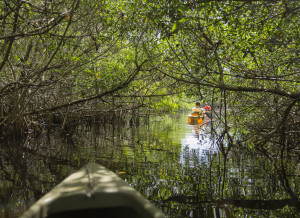 The Everglades is vast. This large wetland has so many “hidden” or hard-to-get-to places or controlled areas where airboats cannot reach. With that said, after you take an airboat tour, you may want to explore the Everglade further, or just in a different way. For those of you who enjoy being active and want that up-close-and-personal experience, try out canoeing and kayaking to take in all the beautiful sites that the Everglades has to offer.
The Everglades is vast. This large wetland has so many “hidden” or hard-to-get-to places or controlled areas where airboats cannot reach. With that said, after you take an airboat tour, you may want to explore the Everglade further, or just in a different way. For those of you who enjoy being active and want that up-close-and-personal experience, try out canoeing and kayaking to take in all the beautiful sites that the Everglades has to offer. The Everglades is home to an array of plants that thrive in the wet, subtropical climate. Although mangroves and grasses come to many people’s minds when thinking about plant life in the Everglades, we’d like to profile a plant that many people might not know about that is native to the area: the pond apple.
The Everglades is home to an array of plants that thrive in the wet, subtropical climate. Although mangroves and grasses come to many people’s minds when thinking about plant life in the Everglades, we’d like to profile a plant that many people might not know about that is native to the area: the pond apple.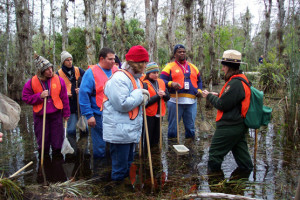 Thinking about heading to the Everglades? Or want to experience it in a different way? Try slough slogging. Ever heard of it? Slough slogging is a great way to experience the Everglades – participants get up close and personal with the environment. In short, slough slogging is a wet hike, or off-trail hiking, in the wetlands in the park with a park ranger.
Thinking about heading to the Everglades? Or want to experience it in a different way? Try slough slogging. Ever heard of it? Slough slogging is a great way to experience the Everglades – participants get up close and personal with the environment. In short, slough slogging is a wet hike, or off-trail hiking, in the wetlands in the park with a park ranger.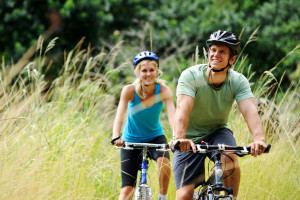 The Everglades is a beautiful, majestic place perfect for you to explore and enjoy in a variety of different ways. If you’re looking for some extra exercise and a peaceful and enjoyable way to experience the park, you should try biking through Shark Valley.
The Everglades is a beautiful, majestic place perfect for you to explore and enjoy in a variety of different ways. If you’re looking for some extra exercise and a peaceful and enjoyable way to experience the park, you should try biking through Shark Valley.





